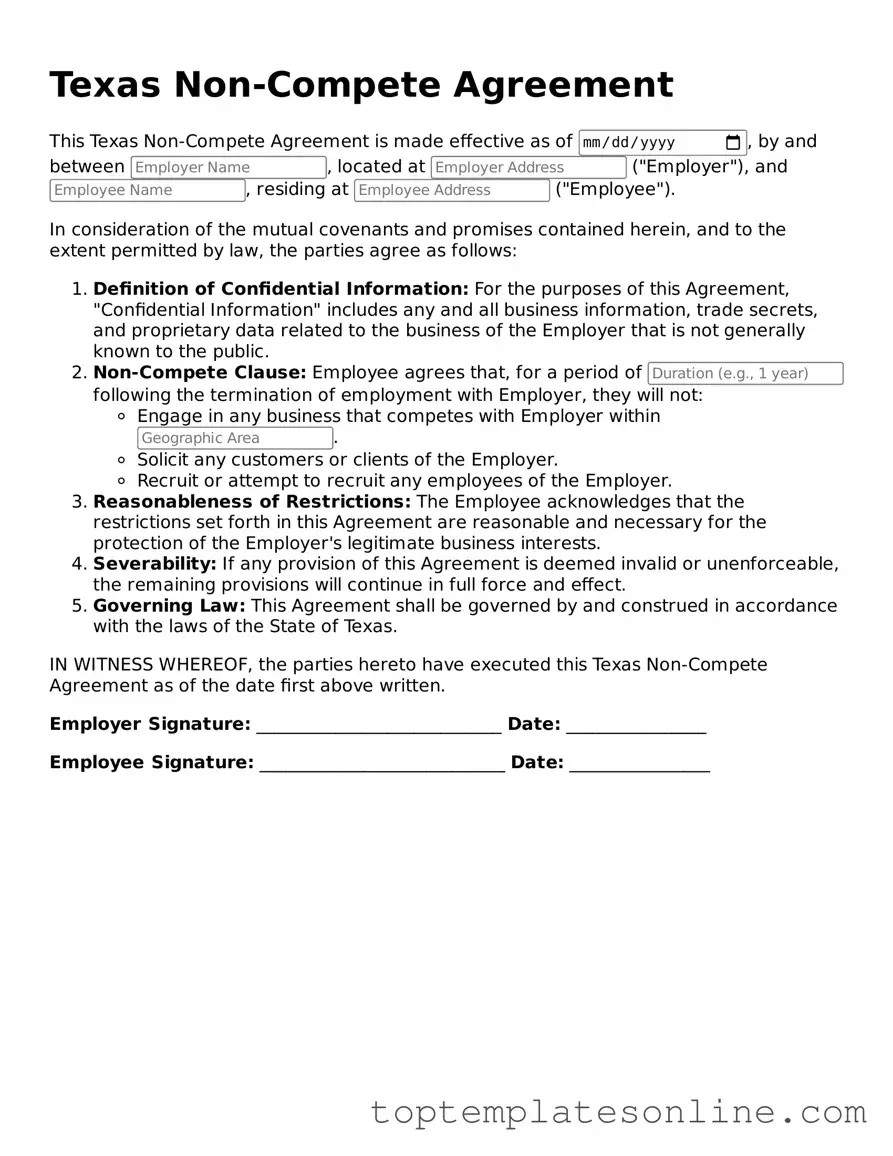In the competitive landscape of Texas business, the Non-compete Agreement serves as a crucial tool for employers seeking to protect their interests and maintain their market position. This agreement outlines specific terms under which an employee agrees not to engage in similar work or start a competing business within a defined geographical area and timeframe after leaving their current position. Key elements of the Texas Non-compete Agreement include the scope of the restrictions, the duration of the agreement, and the geographical limits imposed on the employee. Additionally, the agreement must be supported by consideration, which means that the employee must receive something of value in exchange for their commitment to the terms. Understanding these components is essential for both employers and employees, as it helps clarify expectations and responsibilities, ultimately fostering a more secure working relationship. Texas law requires that these agreements be reasonable in scope and duration, ensuring that they do not unfairly restrict an individual's ability to earn a living. As such, navigating the intricacies of a Non-compete Agreement can be complex, but with careful attention to detail, both parties can benefit from a clear and enforceable contract.
